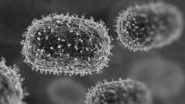Nymphomania, or hypersexuality, is a condition characterised by an excessive and uncontrollable sexual desire or behaviour. While the term 'nymphomaniac' is colloquially used to describe someone with an insatiable sexual appetite, it is not a medically recognised term. Instead, hypersexuality is often considered a symptom of an underlying issue rather than a standalone diagnosis.
Nymphomania History
Originating from Latin, nymphomania translates to 'nymph madness.' In historical contexts, strong sexual desire in a woman, particularly for a man outside of marriage, was often viewed as a sign of illness. It was believed that women with nymphomania were at risk of descending into madness, experiencing organ failure, and even death. Described as an unrelenting, ravenous, impulsive, and unbridled sexual drive, nymphomania was a term laden with negative connotations.
Hypersexuality Causes
The causes of hypersexuality can vary and may include biological, psychological, and social factors. Biological causes may involve changes in brain chemistry or hormone levels, while psychological factors could include past trauma, mood disorders, or personality traits. Social factors, such as cultural or societal influences, may also play a role in the development of hypersexuality.
Nymphomania & Childhood Sexual Abuse
A case study details the story of a young woman who exhibited heightened sexual desires, leading to excessive sexual activity that contributed to the breakdown of her second marriage. Childhood sexual abuse was identified as a significant factor in her condition. The development of nymphomania was often attributed to genetic predisposition or environmental stressors such as trauma or abuse. However, due to the lack of recognition of sex addiction as a disorder, women with nymphomania often faced challenges in receiving proper treatment.
Symptoms of Hypersexuality
Symptoms of hypersexuality can manifest in different ways and may include engaging in excessive sexual activity, having multiple sexual partners, compulsive masturbation, or using pornography excessively. These behaviours can often interfere with daily life, relationships, and work.
Nymphomania Treatment
Treatment for hypersexuality typically involves a combination of therapy and medication. Cognitive-behavioral therapy (CBT) can help individuals understand and manage their impulses and develop healthier coping mechanisms. Medications such as selective serotonin reuptake inhibitors (SSRIs) or anti-androgens may also be prescribed to help reduce sexual urges.
It is essential for individuals experiencing symptoms of hypersexuality to seek help from a qualified healthcare professional. While it can be a challenging condition to manage, with proper treatment and support, individuals with hypersexuality can learn to control their impulses and lead fulfilling lives.
Accurate diagnosis and appropriate treatment could significantly improve their quality of life and functioning. Interestingly, prior to the 18th century, nymphomania was not widely recognised as a disorder. This could be attributed to the prevailing belief that men and women shared the same bodily structure, with women being viewed as an inverted version of men. Consequently, the idea of women exhibiting the same level of lust as men was not considered unusual during that period.
(The above story first appeared on LatestLY on May 09, 2024 01:31 PM IST. For more news and updates on politics, world, sports, entertainment and lifestyle, log on to our website latestly.com).













 Quickly
Quickly




















